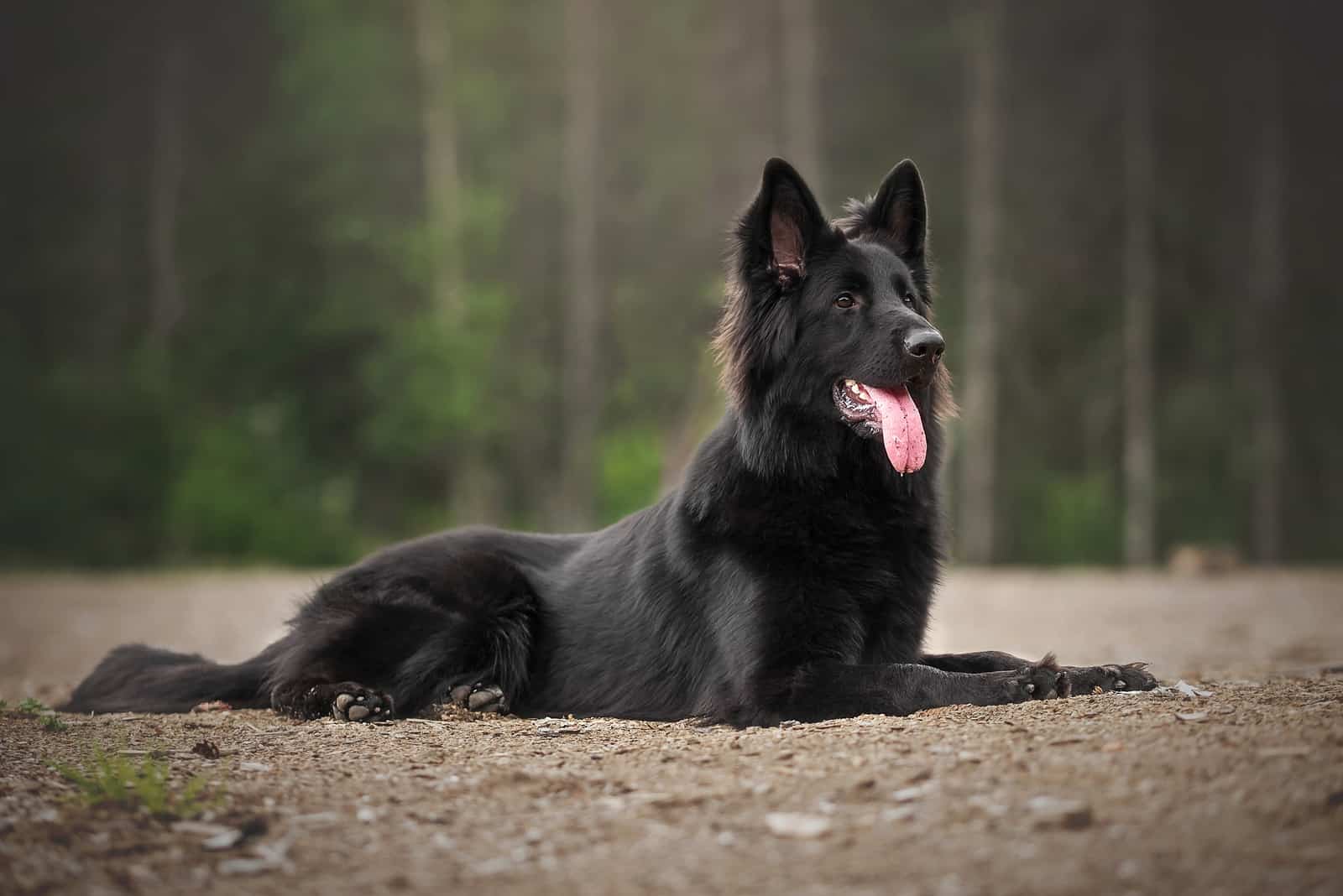First things first, let’s get that name straight: it’s pronounced MAL-in-wah, not Malinoys or Malin-o-iss!
Okay, now that that’s done, what else do we need to look at? It depends on how familiar you are with the Belgian Malinois breed, or the Mal, as it’s affectionately known. Those who don’t know the breed would be forgiven for thinking that it’s a small German Shepherd, as they bear a strong resemblance to them.
This is not surprising as both breeds can trace their origins back to ancient European livestock herding dogs.
However, they have developed different characteristics over time, each being selectively bred in the regions that have given them their names. The Belgian Malinois has a more complex history, which we’ll come to in a moment.
Before that, we need to ask…
Can Belgian Malinois Have Long Hair?
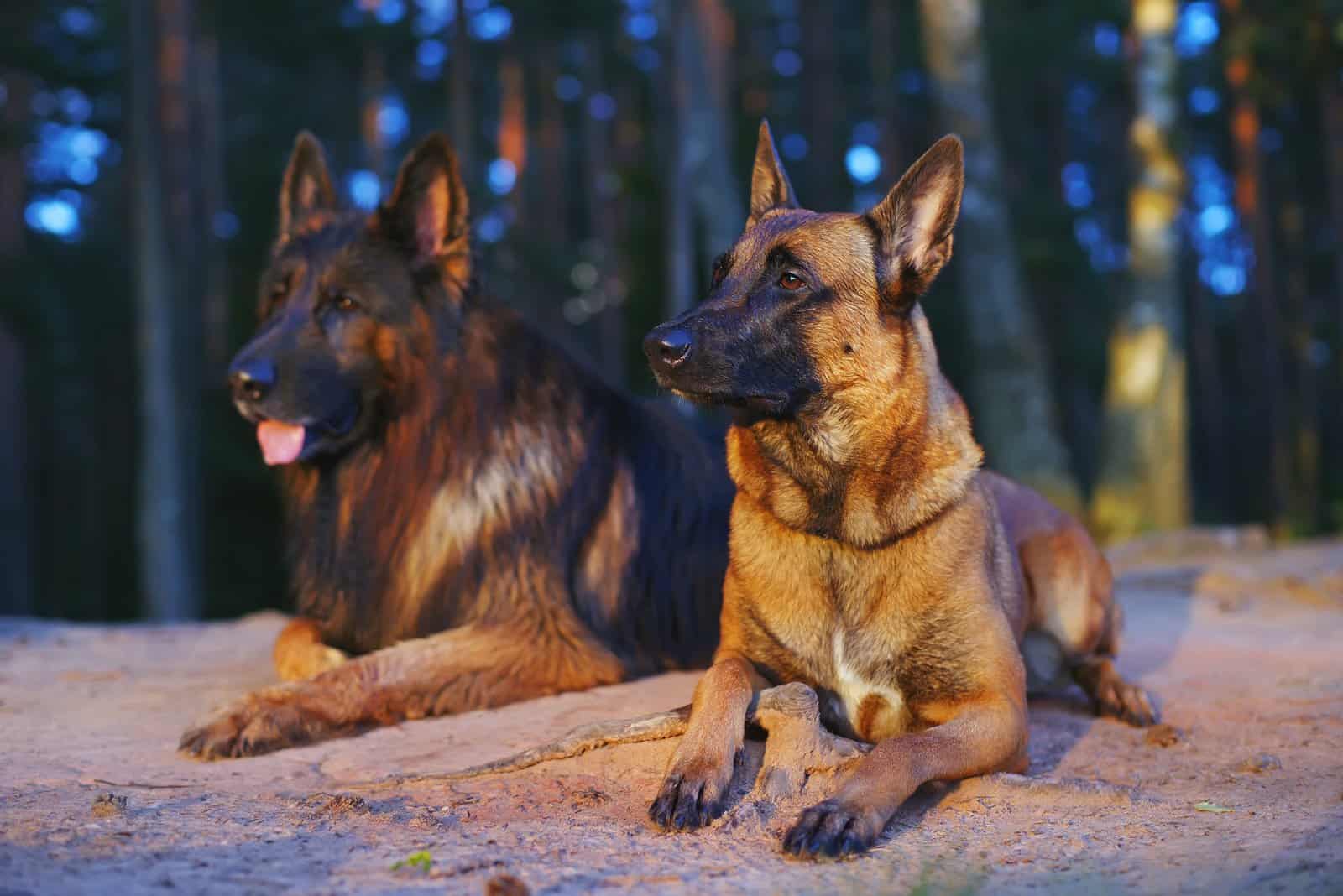
These dogs are well known for their short coats, so what’s going on here? Is there a long-haired version?
Well, this would be a pretty short and pointless article if not!
Technically, you can get long-haired Belgian Malinois, but it isn’t that simple. To get to the bottom of this mystery, we need to look into the history of the breed.
For centuries, farmers and shepherds in Western Europe used herding dogs that were bred for work, with little attention paid to their form. These dogs were the ancestors of breeds such as the German Shepherd, the Dutch Shepherd, the Bouvier des Ardennes, and the Belgian Shepherd (also known as the Chien de Berger Belge or the Belgian Sheepdog).
In most regions, breeders took the time to standardize their breeds and preserve their characteristics. The Belgian Shepherd was somehow overlooked, and was almost extinct by the end of the 19th century.
In 1891, Professor Adolphe Reul founded the Club de Chien Berger Belge, aiming to rescue the Belgian Shepherd. However, he discovered that there were many different variations in coat color and size. For around 60 years, different breeding programs were used to define the breed and set breed standards. The trouble is, nobody could agree on how many types there were, even though they were considered a single breed. Some said there were two types; others said eight.
To confuse matters further, the two world wars interrupted breeding programs and threatened the breed with extinction once again, so breeders were forced to allow interbreeding between the types, which had been prohibited by the Club de Chien Berger Belge.
It wasn’t until 1956 that a breed standard was finally set, and four distinct types of the Belgian Shepherd were agreed on.
What has all this history got to do with the long-haired Belgian Malinois?
Well, one of these types has a long coat! Read on to find out more…
What Are The Different Types Of Belgian Malinois?
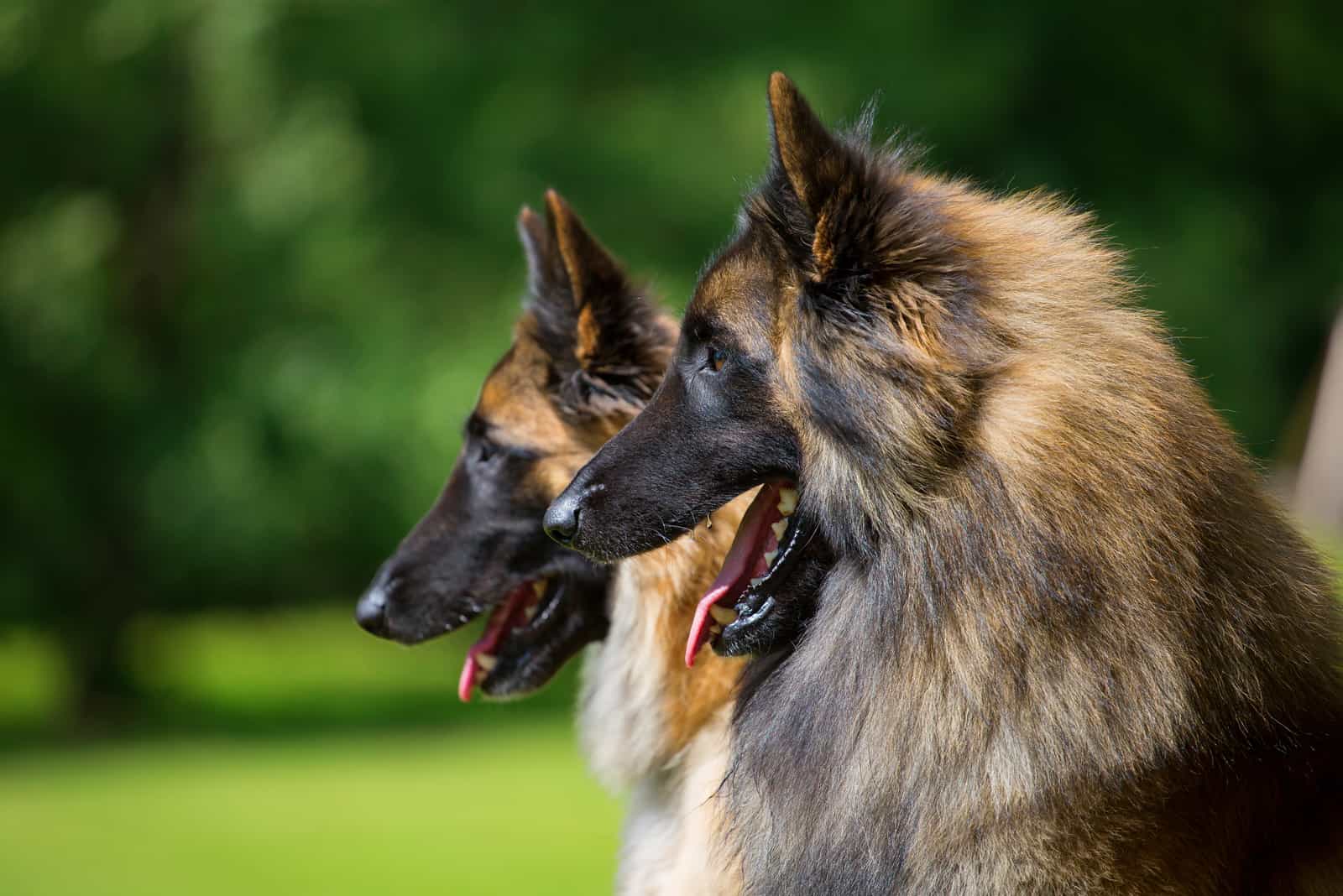
It’s commonly accepted that there are four different types of the Belgian Shepherd dog. But, are they all Belgian Malinois? Are they a single breed? What exactly is going on here?
It’s easy to blame the American Kennel Club for the confusion. In 1959, the AKC recognized the Belgian Malinois as a separate breed while most of the rest of the world still class the Mal as part of the Belgian Shepherd breed.
This means that in the USA, or at least for anyone who accepts the AKC’s ruling, there are four different Belgian Shepherd breeds, of which the Mal is just one.
However, the AKC only did as they were asked by the breed clubs! Perhaps the finger of blame should be pointed at organizations like the American Belgian Malinois Club.
Let’s look at these four in more detail:
The Belgian Laekenois
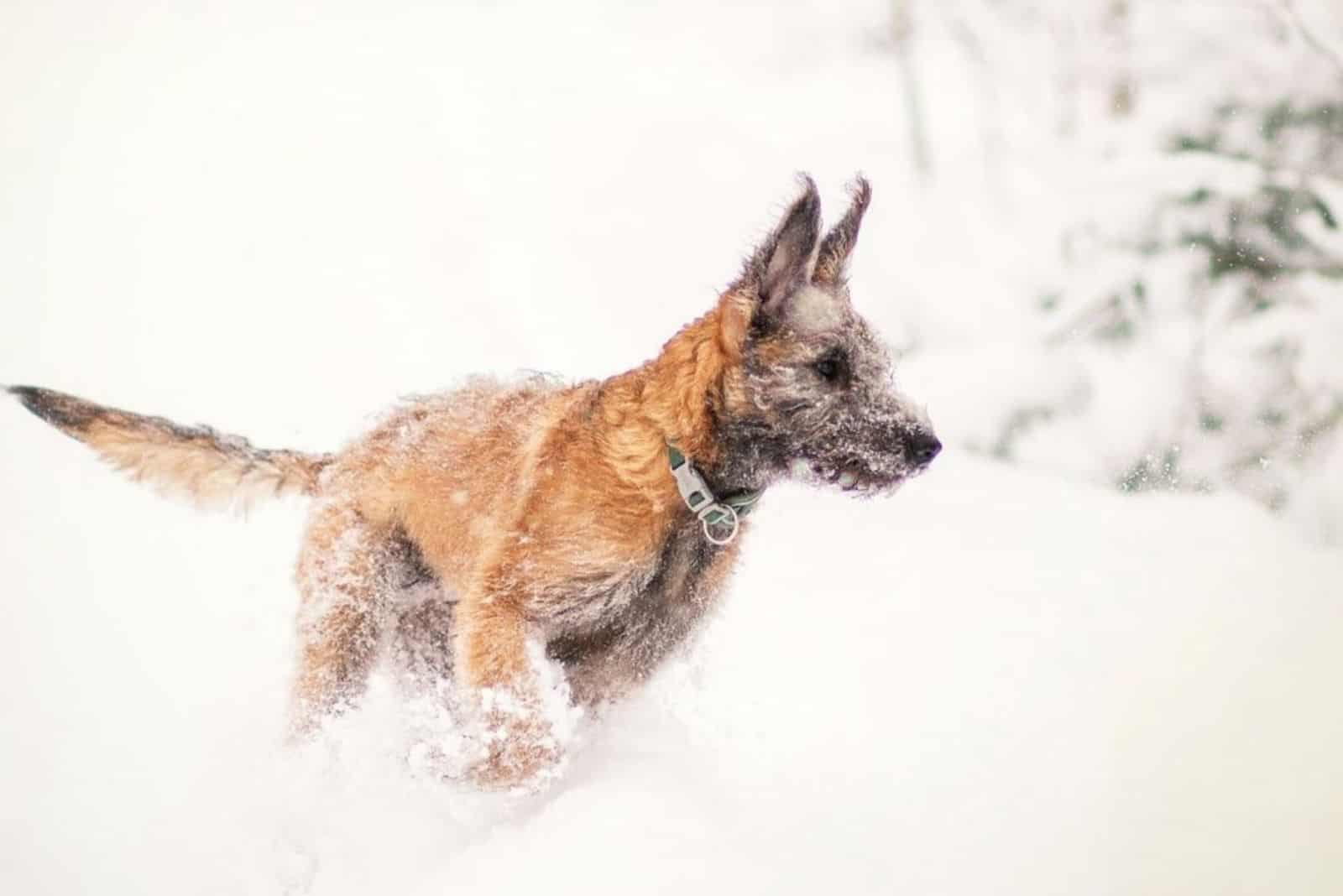
Photo from: @loki.twix
This is the rarest of the four, taking its name from the Château de Laeken, an official residence of the Belgian royal family. It has a distinctive, shaggy, rough coat and a black mask. This coat is usually fawn with a black overlay (the tips of the hairs are black, but the overall effect isn’t like brindle).
As well as being a herding breed, these dogs were used to guard linens that were set out in the sun to bleach! The Laekenois (pronounced lak-in-wah) was also recognized as a separate breed by the AKC in 2019 after several years of campaigning by breed clubs in the U.S.
The Laekenois weighs between 55 and 65 pounds, and measures between 22 and 26 inches at the shoulder.
The Belgian Groenendael
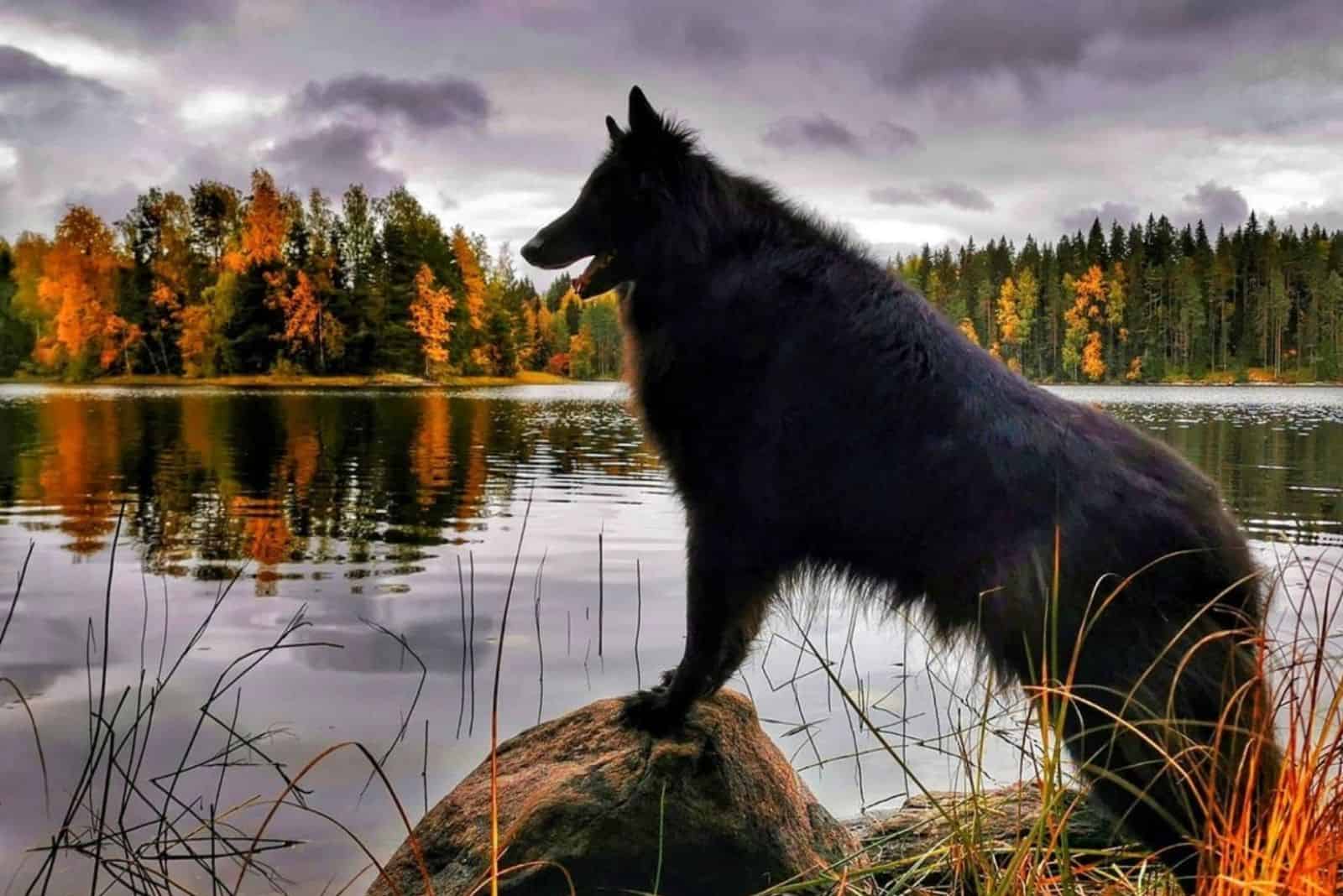
Photo from: @tiinakant
Often mistaken for a black, long-haired German Shepherd dog, the Groenendael has a solid black, smooth double coat. It was named after Château de Groenendael, a country house in central Belgium owned by Nicholas Rose, who is credited with its creation.
These dogs usually weigh between 65 and 75 pounds, and stand between 22 and 26 inches at the shoulder.
The Belgian Tervuren
The Tervuren is also a long-haired variety, although it is usually fawn in color, with a black mask. The name comes from the region of Tervuren where it was first bred using the foundation sire of the Groenendael variety.
Tervurens weigh between 45 and 75 pounds, and also measure between 22 and 26 inches at the shoulder.
The Belgian Malinois
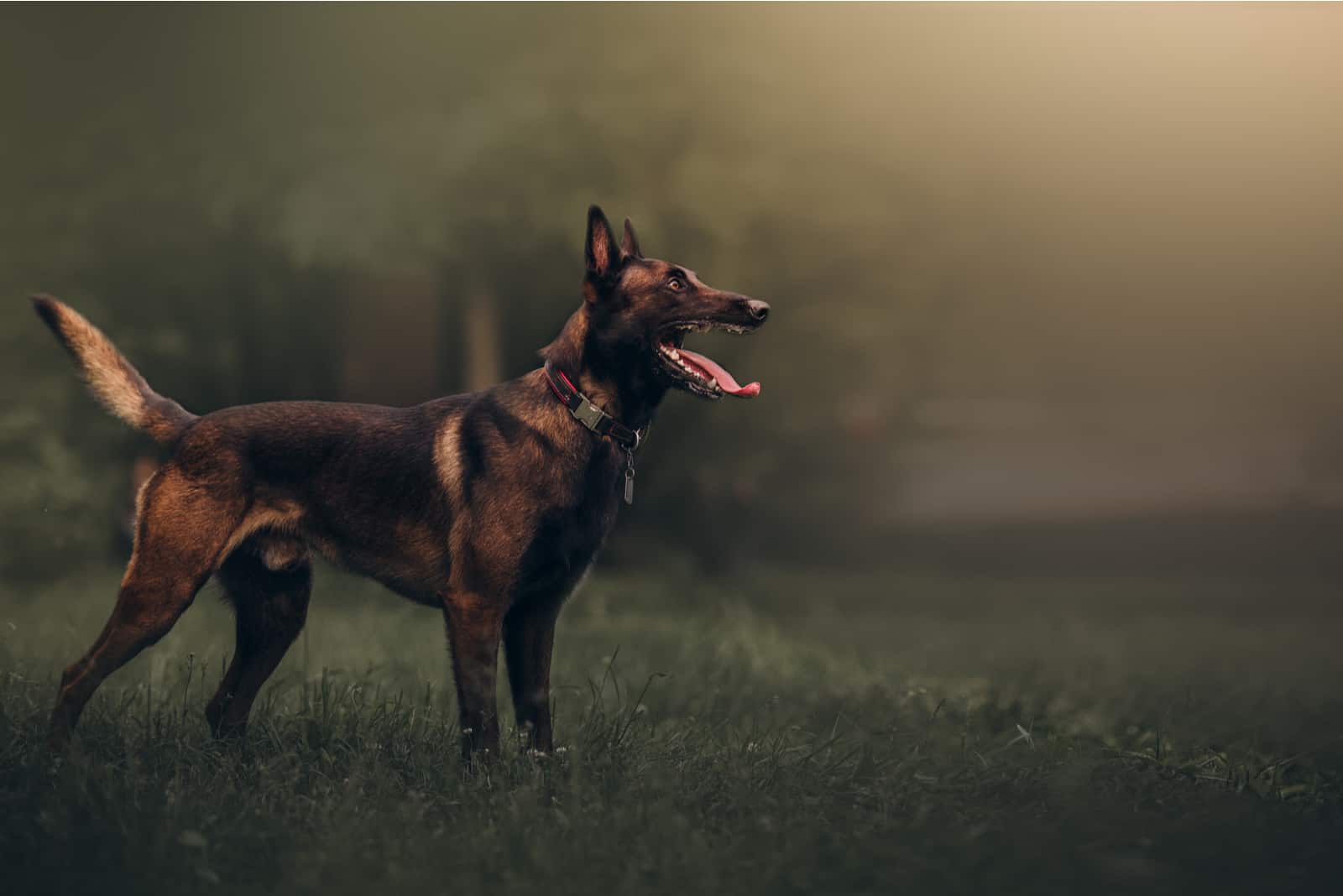
Taking its name from the town of Maline, Belgium, the Belgian Malinois has a short-haired fawn coat and a black mask. The AKC breed standard accepts a range of colors from rich fawn to deep mahogany. They have a dense undercoat and a hard topcoat that’s suited for outdoor work.
Mals have the widest weight range, between 40 and 80 pounds, but they still mirror the height of the other three types, at between 22 and 26 inches. In all four cases, females will be on the smaller side.
As you can see, two of the four are regarded as entirely separate breeds by the AKC. The problem is, most other kennel clubs, including the United Kennel Club, regard them all as Belgian Shepherds; a single breed with four varieties.
This makes it difficult and frustrating for breeders who import breeding stock from abroad, as any pups in their breeding programs that don’t fit AKC breed standards will be disqualified from registration. It is entirely possible for two purebred Belgian Malinois dogs to produce a black, long-haired pup depending on their genetic makeup. Things like this lead to accusations that the breeder has used another dog, such as a German Shepherd.
So, are they four different varieties of one breed, or four entirely separate breeds?
The answer rather depends on how much you care, and also whether you plan to register your dog with the AKC or the UKC and enroll it in dog shows.
In the end, it would be ideal if everyone used the same classification, as this would make life easier for us all. Until that happens, we just have to cope as best as we can.
To help make things clearer, we’ll recap:
The Belgian Shepherd (or Belgian Sheepdog) is split into four closely related varieties that share a common ancestry. These have been widely interbred in the past, resulting in genetic throwbacks and anomalies within each of the ‘purebred’ varieties.
Two of these Belgian Shepherd varieties (the Belgian Malinois and the Belgian Laekenois) are recognized by the AKC as completely separate breeds. It is highly likely that the others will also be accepted as breeds in their own right if breed clubs exert enough pressure on the AKC.
Some people confuse the issue further by referring to all four types as varieties of Belgian Malinois (which we are guilty of in the title of this section, but only as a means of drawing attention to the problem!). This is incorrect and misleading, and they should be viewed as varieties of the Belgian Shepherd.
Now that we’ve (hopefully) cleared this up, we’ll move on to find out more about the long-haired Belgian Malinois.
Are Belgian Malinois Good Family Pets?
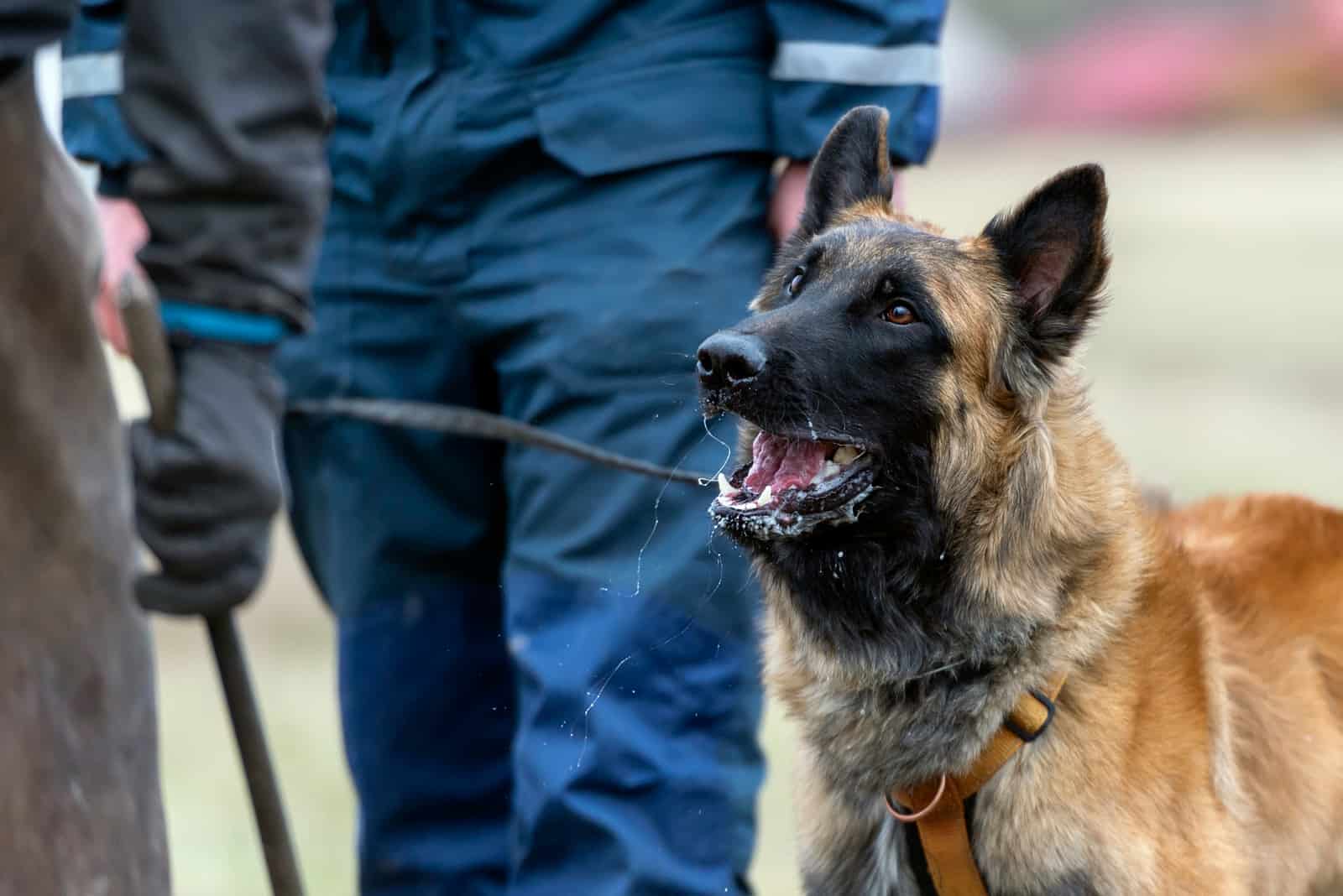
Yes, long-haired Belgian Malinois can be amazing family dogs, just like the short-haired version.
Though, as you might have guessed, there’s a big however coming!
HOWEVER… there are some essential ground rules for making this a success. Mals are working dogs through and through, and this has been bred into them for generations, resulting in high-energy dogs with a strong desire and instinct to work. They are among the most loyal breeds, forming an unbreakable bond with their owners. They are highly intelligent and trainable, making them ideal as police dogs and for search and rescue work.
Mals are affectionate with family, but reserved with strangers. They are instinctively protective, and they will always guard you, your home, and your kids against anything or anyone they see as a threat.
Originally, they were never bred as pets. These dogs were kept solely as herders and guard dogs, performing the task perfectly. To keep a Mal as a pet, you must ensure that they are kept active and have adequate mental stimulation to replicate the conditions they were bred for. It’s advisable to enroll your dog in agility classes, herding competitions, Schutzhund (tracking, obedience, and protection skills), flyball, or dock diving. Take them hiking, biking, or running with you – they’ll love it!
And, because of the immensely strong bond they form with you, it would be a mistake to leave them alone for too long. You should definitely never chain them up in a yard! These are by no means kennel dogs, and to deny them your companionship would make them very unhappy.
They also have a very strong prey drive and herding instinct that will send them chasing after pets, wild animals, and small children. Continuous training and socialization from an early age are absolutely essential with this breed! Seriously, we can’t stress this enough. You must be able to deal with their high energy level.
If you ignore any of this advice and fail to provide socialization, adequate exercise, or keep them occupied and stimulated mentally, or if you leave them home alone for long periods, then you will be storing up a whole load of trouble for the future.
A bored, lonely, frustrated Belgian Malinois that isn’t socialized will become destructive and aggressive, and they will not be good to have around the home, especially if you buy one from a working line. This means that the dog’s parents and their parents before them (and so on) were bred as working dogs rather than pets.
If you can’t provide what it needs, then the Mal is not the dog for you, whether it has a long or short coat! Because they present a challenge, they are really not suitable for first-time dog owners.
However, if you’ve got what it takes to be a Mal parent, then do yourself a favor: find a good, reputable breeder who has a puppy socialization program. This will give you a head start in the process, making it easier for you to continue. Ideally, select a breeder who uses the SuperPup or biosensory training method, designed by the U.S. military to create superior dogs that are healthier, happier, and have a longer lifespan.
How Much Does A Belgian Malinois Cost?
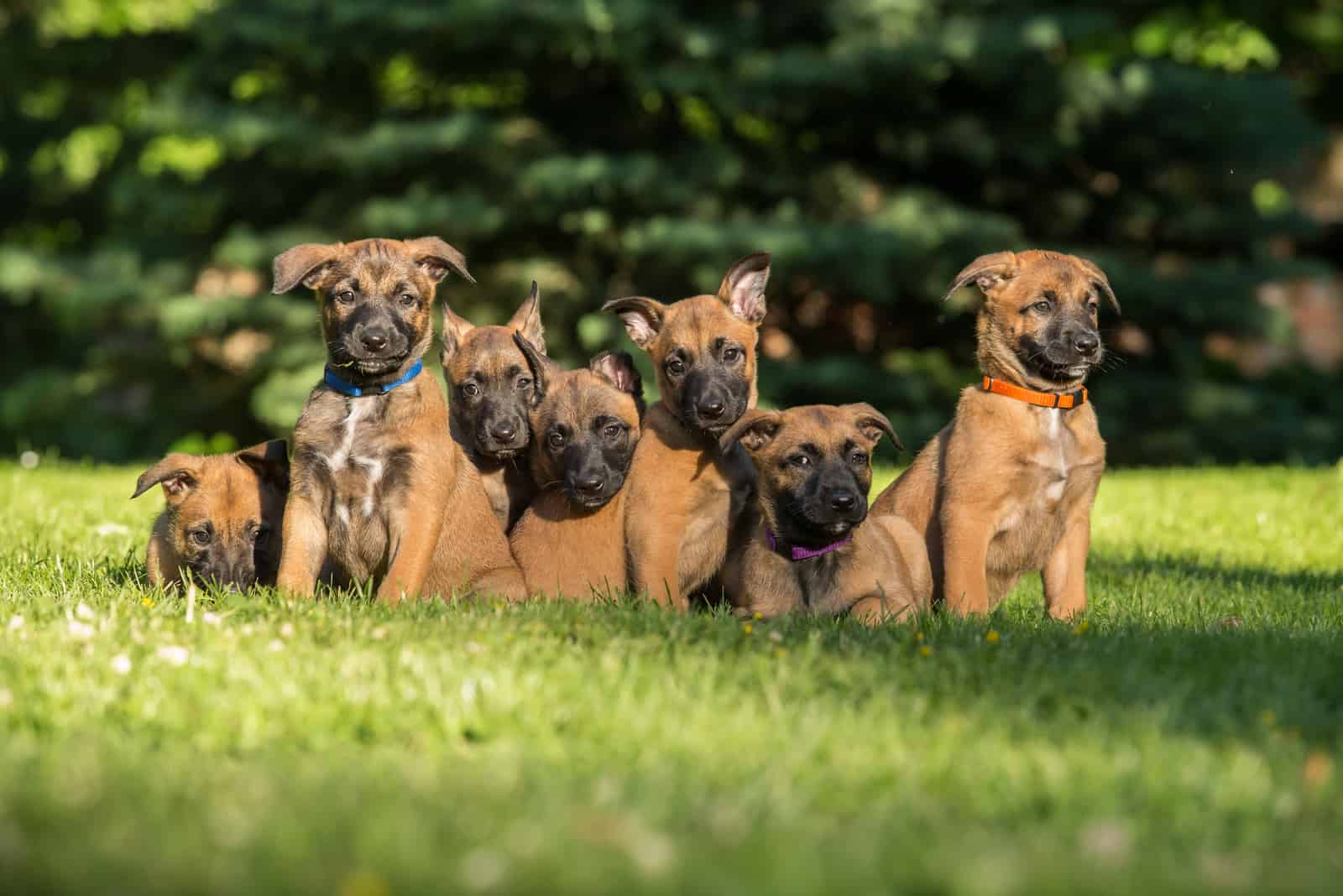
Are you looking for a long-haired Belgian Malinois puppy? After reading this far, you’ll know that it would technically be regarded as a Tervuren or a Groenendael.
Generally, you’ll pay between $600 and $1,500 for a Belgian Malinois puppy. This is a ballpark figure only, and there’s a chance that you’ll pay as much as $3,000 in some cases.
What about the other Belgian Sheepdogs?
They’ll be pretty much the same, although prices will start higher, around $1,000 to $1,500. A Laekenois will probably be the more expensive of the four, as it is still rare, so be prepared to pay upwards of $3,000.
The price will be affected by your location, the demand for the breed, the reputation of the breeders, and the pup’s pedigree. Although it’s great to grab yourself a bargain, don’t be fooled by bargain-basement prices! Only approach reputable established breeders who you trust. Avoid backyard breeders and puppy mills at all costs, or you’ll be saddled with a pup that probably has a host of health problems. And, there’s a good chance that it won’t even be a Belgian Malinois or even a Belgian Shepherd.
If you want a fully trained Mal, to save you the trouble of doing the job yourself, you’ll need a big budget. Are you sitting down?
Then, here goes…
A trained Belgian Malinois will set you back between $20,000 and $100,000. No, that wasn’t a typo – you read that right. It might seem like a lot of cash, and it is. But, these dogs aren’t just taught to sit, stay, or roll over and play dead. This is considered one of the most intelligent dog breeds in the world, which is why it excels at police work.
The average cost will be somewhere between $45,000 and $65,000, depending on the breeder and the level of training. These are personal protection dogs that have been trained to act immediately. They are able to think and judge a situation in an instant. They will put themselves between you and any threat, even if it compromises their own safety.
A trained Mal will know how to neutralize a threat and keep the intruder contained until help arrives.
It’s essential to bear in mind that these aren’t just pets. They are trained to be loyal and loving around family and affectionate with kids. But, when the need arises, they will spring into action, alerting you to any potential threats. They will confront intruders and display aggressiveness to deter them.
How Long Do Belgian Malinois Live?
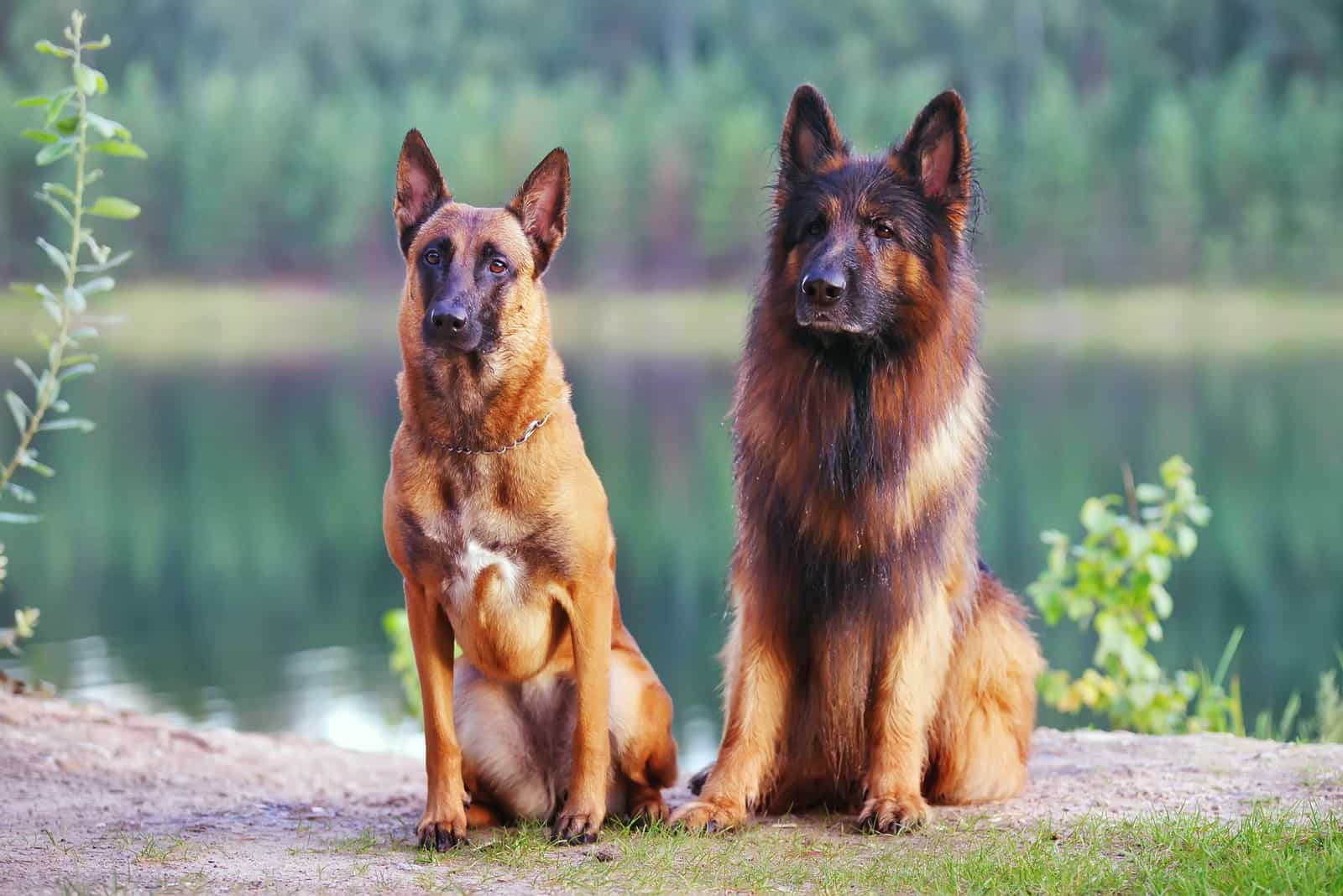
This is where things get tricky because of the whole issue about the four different varieties versus four separate breeds.
The AKC suggests that the Belgian Malinois has a life expectancy of 14 to 16 years. It sets the Laekenois at 10 to 12 years, so we can already see that there’s a difference.
Other sources put the Tervuren in the middle, at 12 to 14 years, and the Groenendael at 13 to 14 years. Of course, these figures are estimates based on incomplete data, as all projected lifespans are. But, they serve as a general guide, and there must be an element of truth in them.
So, we can’t say that the long-haired Belgian Malinois has a lifespan of 14 to 16 years, even if it’s a genuine purebred Mal that just happens to be born with long hair. Current AKC guidelines would identify it as a Tervuren or a Groenendael, potentially reducing the expected lifespan by four years.
The best advice is to seek out a good breeder who runs health screening and testing. The Belgian Shepherd breed (or breeds!) is generally healthy, but needs to be screened for health issues such as hip and elbow dysplasia.
You can play your part by giving your dog the best diet, plenty of exercise, and adequate mental stimulation. Oh, and obviously, lots of love!
When all’s said and done, nobody can accurately predict how long your pooch will be with you. With the right care and a bit of luck, they’ll stick around for a good long time, maybe as much as sixteen years or more.
However long they live, it’s our job to make sure that they have a safe, happy, and loving home during that time because that’s what being a pet parent is all about.
In Conclusion
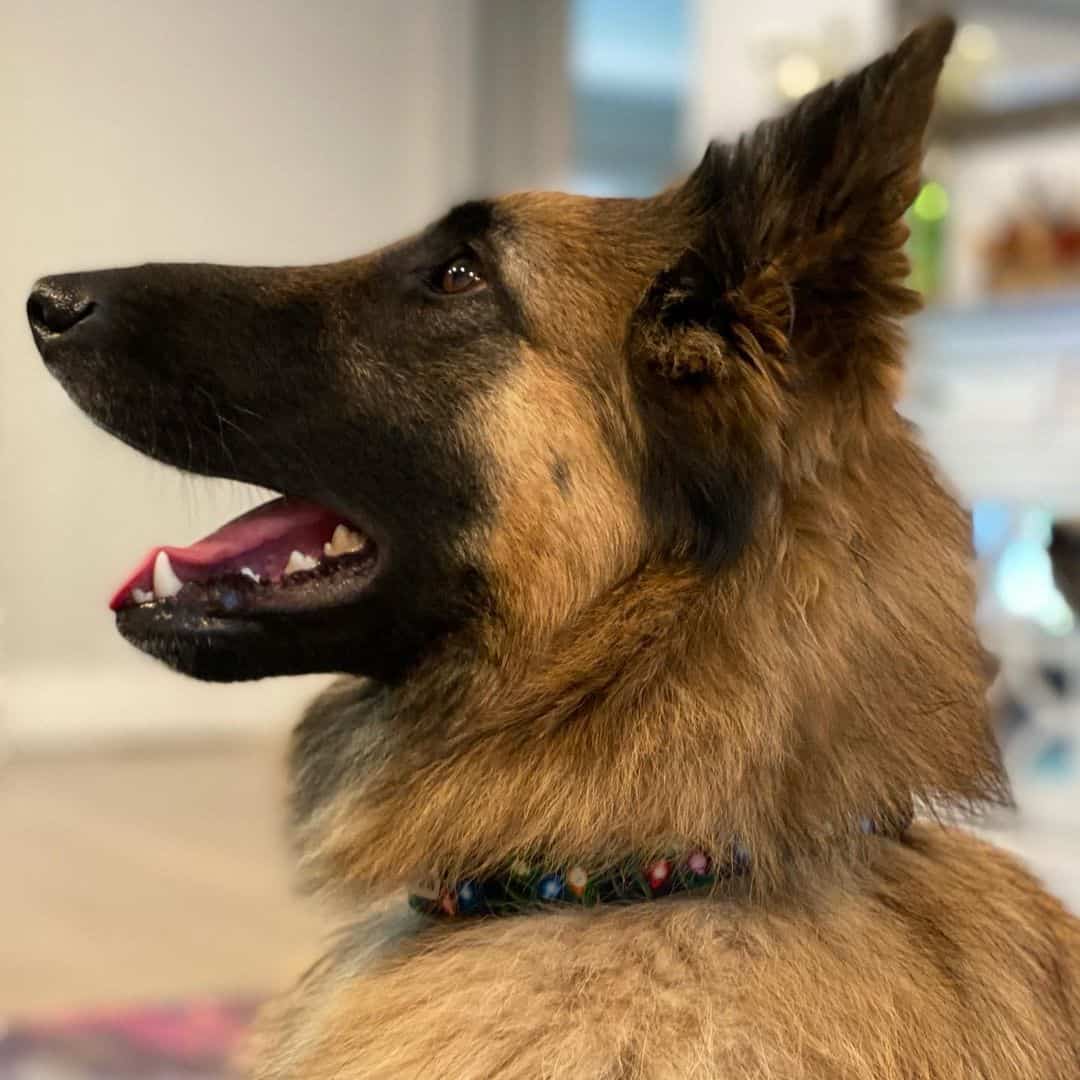
Photo from: @malinoisteam
Our quest has uncovered some interesting results.
According to some people, there’s no such thing as a long-haired Belgian Malinois! To them, it’s a Tervuren or a Groenendael.
However, as we’ve seen, two Mals can produce long-haired pups, so it isn’t anywhere near as black and white as it might seem.
In fairness, you can understand why certain parties are adamant that these are four different breeds. There are differences in character, coat color, coat type, lifespan, and size.
The main issue is that there are two systems in place, and that only causes confusion and frustration.
As we mentioned, it isn’t a problem if you’re okay with it, but it’s another matter if you want to show your dog or register it with a kennel club. It’s entirely possible that you could register the same dog as two different breeds; once with the AKC, and once with the UKC!
So, is there such a thing as a long-haired Belgian Malinois?
Yes, there is. It might be rare, and you might have trouble with registration. You might also have to wait for a long-haired pup if you approach a breeder who only deals with standard purebred Belgian Malinois, as they won’t be able to predict the length of their pup’s coat!
You could approach a breeder who advertises that they produce Belgian Shepherds, but then specify which types, such as Groenendael or Tervuren, as these are the long-haired ones.
It all depends on which camp you fall into regarding whether the Belgian Sheepdog is one breed or four individual breeds.
Then again, if you have a beautiful, healthy, devoted, loyal dog, does it really matter?
And if you’d like to know how much food your pooch should eat, you can check the Belgian Malniois feeding chart here.
